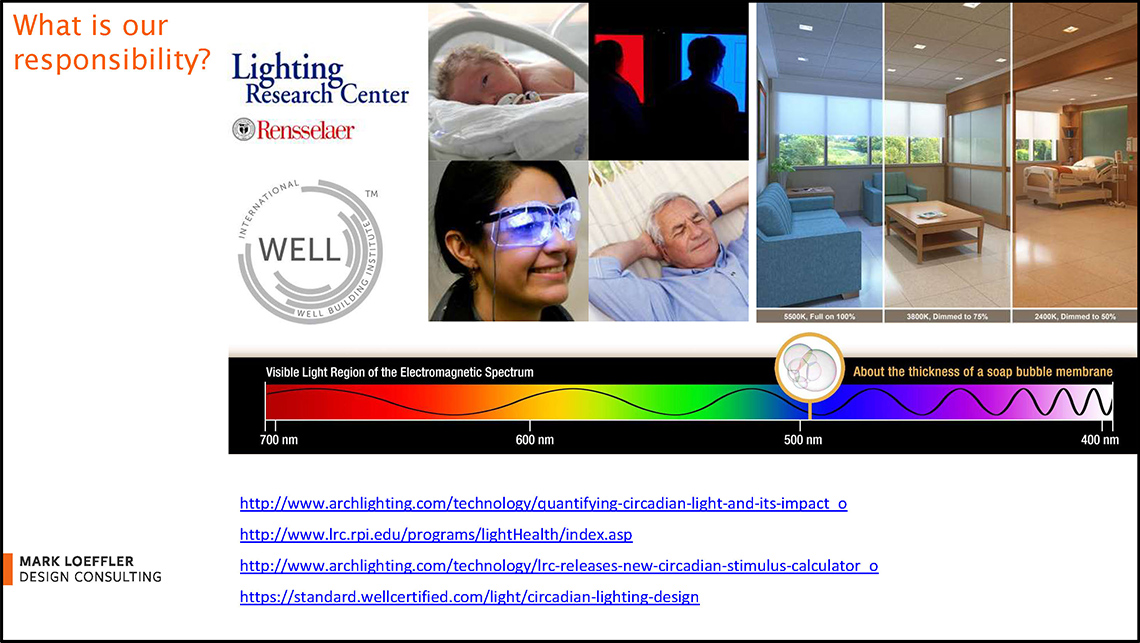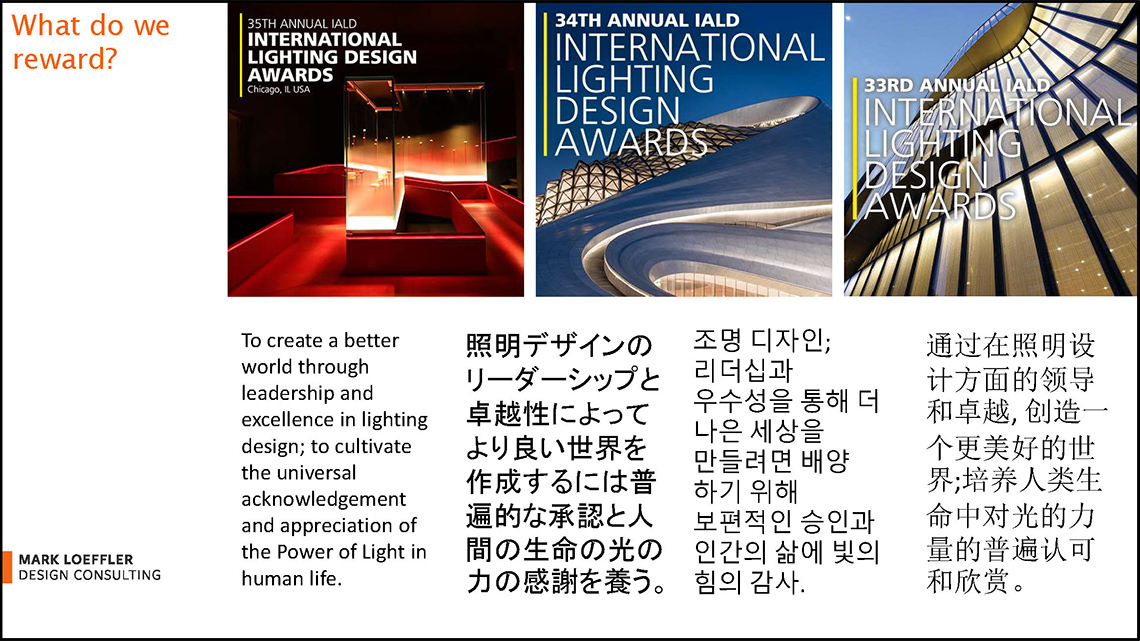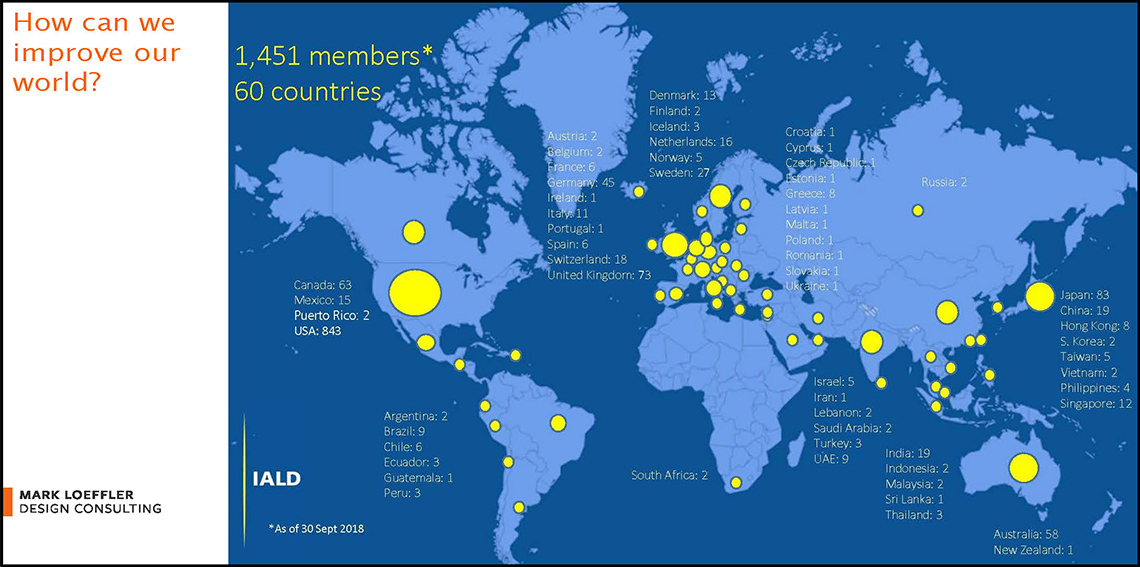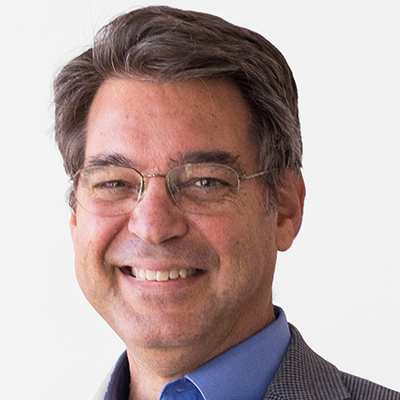The traditional goals of lighting designs have mainly been to make functional and visually attractive lighting environments. However, since the early 1990s, it has become a design field with more important additional roles, including energy conservation and environmental considerations. Around that time, IALD established a committee for “sustainable designs,” in which American lighting designer Mark Loeffler played a leading role.

As awareness of environmental concerns has risen, the LEED green building/facility rating system was introduced in the 2000s. Lighting designs also were required to fulfill its evaluation standards to obtain LEED Certification. WELL Certification has been implemented in recent years, and even the impact of lighting on human health and productivity is evaluated. A representative example is the idea of the “circadian rhythm”—the cycle of our internal clock. Adjusting color temperature and illuminance of lighting fixtures according to the rhythm is thought to have a positive impact on the human body.

In reference to this trend, Loeffler said we need to reconsider what truly “good lighting designs” are, by returning to the Code of Ethics and Professional Conduct of IALD. It states that lighting designers must only work in the areas of their own expertise and should not be engaged in projects that cause a negative impact on society. Much more research is needed about the causal association between lighting and human health. At this point, it is overly impetuous if lighting designers recommend such ideas to clients as if they are doctors prescribing medicine to patients. Loeffler went on to say that we need to be honest and admit there are things we don’t know.

Loeffler also raised an alert over the integration of lighting systems in IoT. It is great that the integrated lighting system in IoT automatically predicts human behavior and controls lighting to utilize natural light. However, IoT is way too infiltrated into our lives and can be used as a tool for monitoring. Therefore, lighting designers need to think about how to address the issue of privacy invasion caused by IoT popularization, Loeffler insisted.
As described, the definition of “good lighting designs” has changed since IALD was established 50 years ago. Loeffler concluded that IALD—which has become an association with nearly 1,500 members in 60 countries worldwide—should exert its world-class influence on the creation of a better world.

【Date & Time】11:15‒12:15, March 7, 2019
【Venue】Room 102, 1F, Conference Tower, Tokyo Big Sight
【Speaker】Mark Loeffler, LLC, Mark Loeffler Design Consulting
【Organizers】IALD Japan, JLMA, Nikkei Inc.
Profile
Mark Loeffler
Mark has practiced lighting and sustainable design for more than 30 years. Originally a theatrical lighting designer, he shifted into architectural lighting, daylighting, and green design while finishing his graduate studies at Parsons School of Design. Advocating for joyful, invigorating, healthful, and sustainable design, Mark has consulted on notable academic, healthcare, research, corporate, institutional, and recreational buildings in the US and around the world. In 2018, he established Mark Loeffler Design Consulting, LLC to help architects, engineers, planners, and owners to better leverage their lighting and sustainable design ambitions. He teaches and lectures widely for universities and professional conferences.






